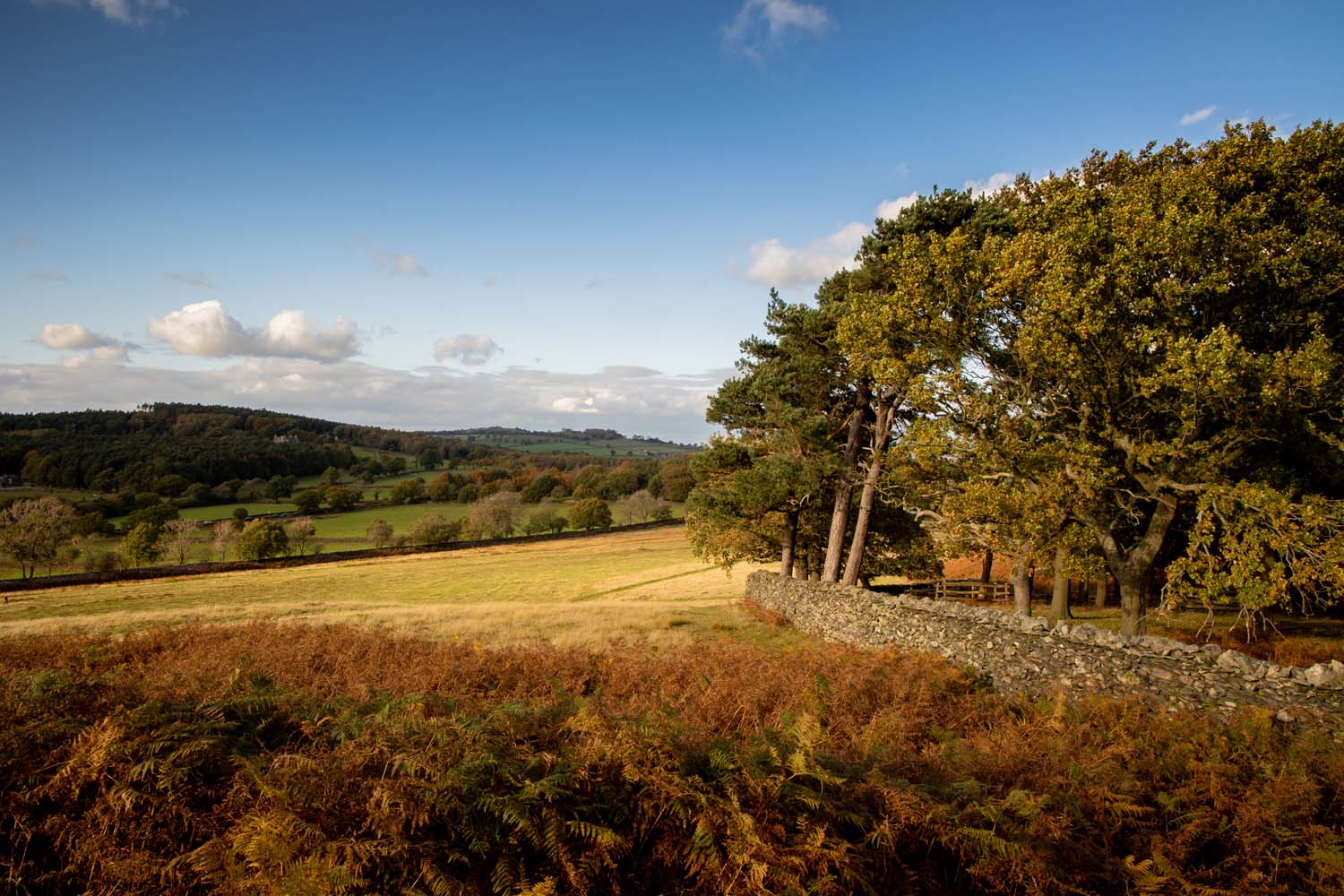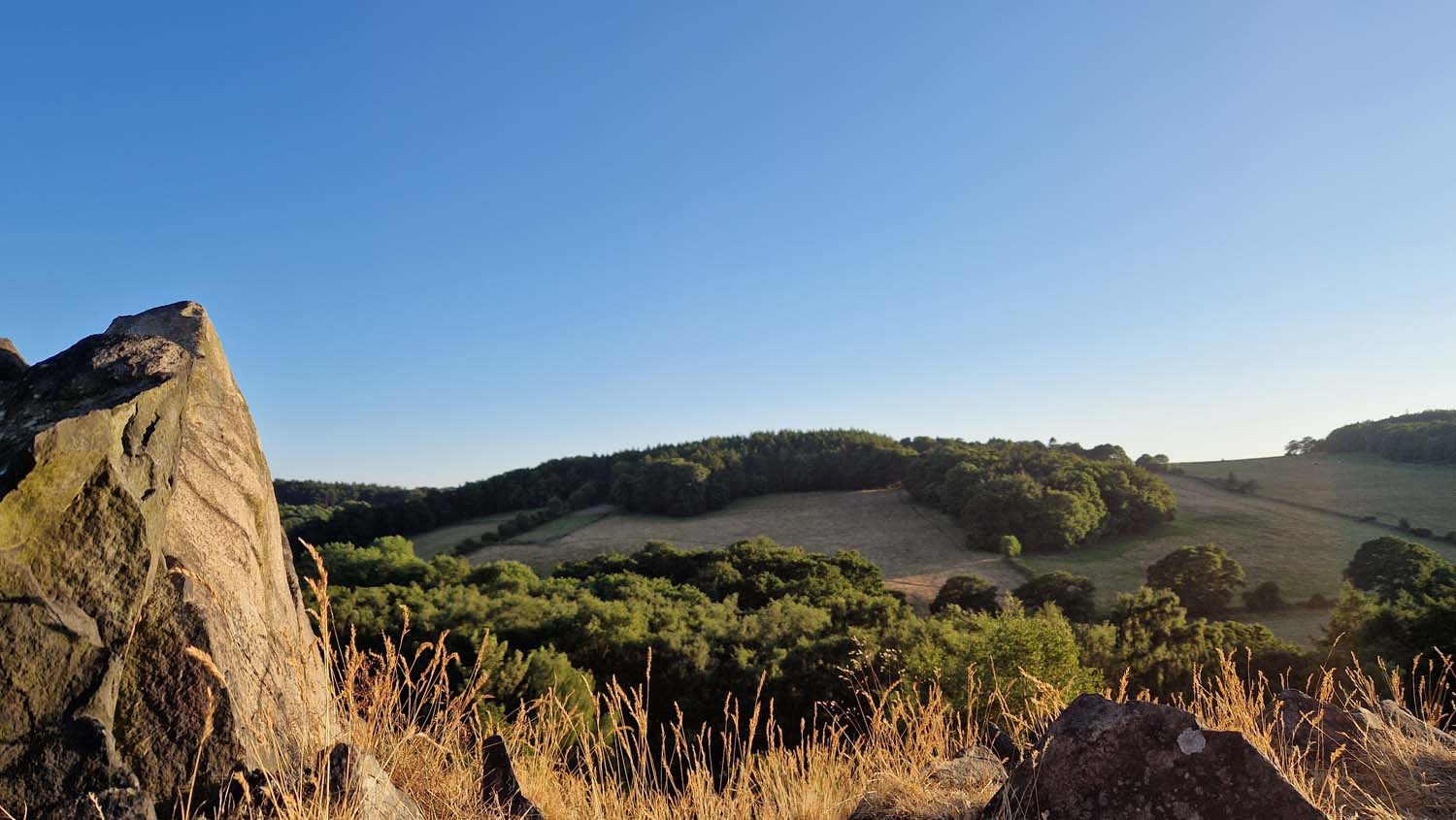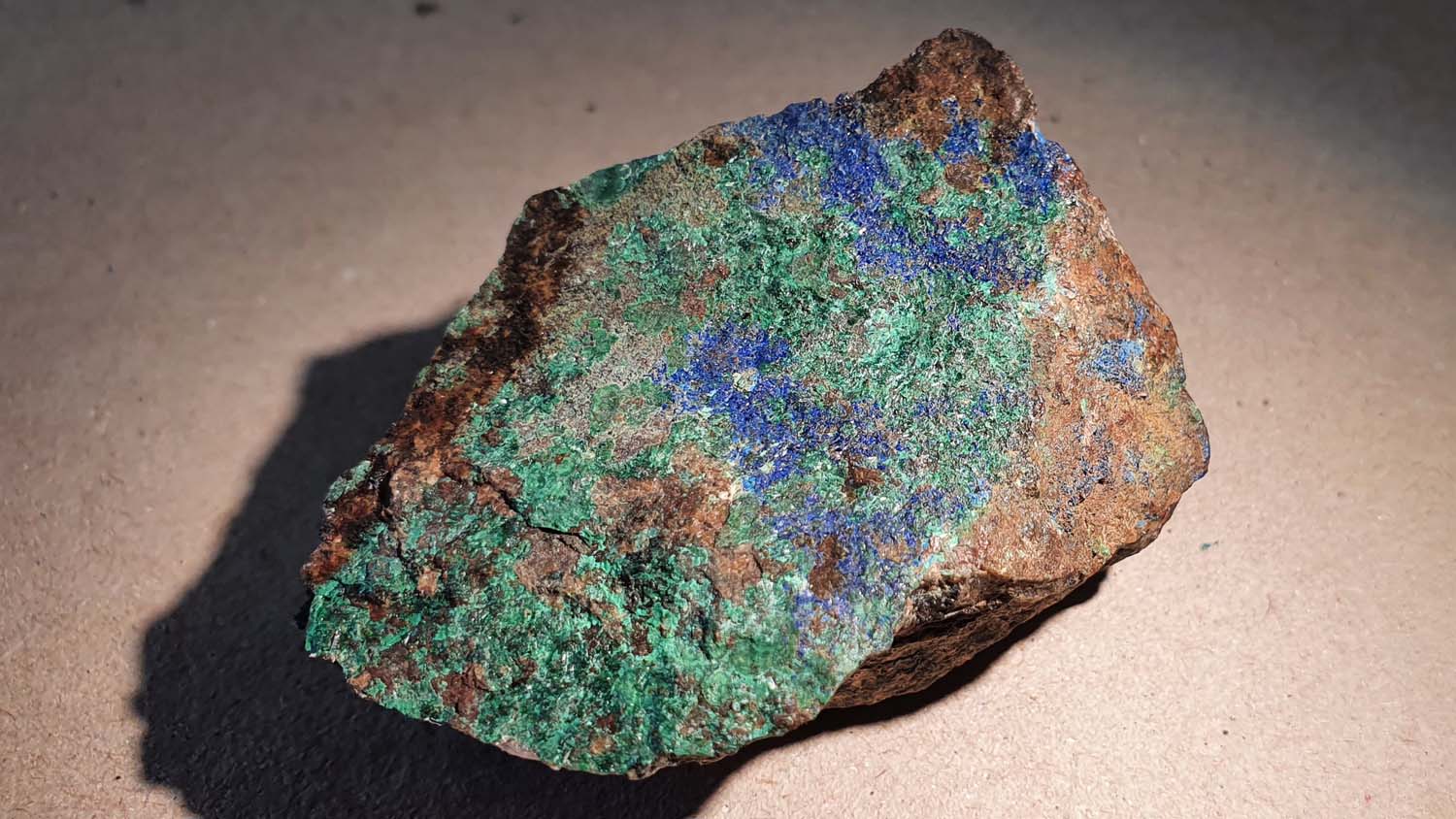McIlroy, D. (2025). Architectural modelling of the fractal-like Ediacaran rangeomorph Charnia masoni. Journal of the Geological Society, jgs2024-242.
Mussini, G., & Dunn, F. S. (2024). Decline and fall of the Ediacarans: late‐Neoproterozoic extinctions and the rise of the modern biosphere. Biological Reviews, 99(1), 110-130.
Yardley, B. W., Milodowski, A. E., Field, L. P., Wogelius, R. A., Metcalfe, R., & Norris, S. (2023). Groundwater–rock interactions in crystalline rocks: evidence from SIMS oxygen isotope data. Mineralogical Magazine, 87(4), 519-527.
Pharaoh, T. C., Beamish, D., Williams, J. D. O., Carney, J. N., & Wilby, P. R. (2023). The Charnwood Terrane revisited: an integrated petrogenetic and petrophysical model for crustal structure in southern Britain. Journal of the Geological Society, 180(6), jgs2023-001.
Dunn, F. S., Kenchington, C. G., Parry, L. A., Clark, J. W., Kendall, R. S., & Wilby, P. R. (2022). A crown-group cnidarian from the Ediacaran of Charnwood Forest, UK. Nature Ecology & Evolution, 6(8), 1095-1104.
Pérez-Pinedo, D., McKean, C., Taylor, R., Nicholls, R., & McIlroy, D. (2022). Charniodiscus and Arborea are separate genera within the Arboreomorpha: using the holotype of C. concentricus to resolve a taphonomic/taxonomic tangle. Frontiers in Earth Science, 9, 785929.
Dunn, F. S., Liu, A. G., Grazhdankin, D. V., Vixseboxse, P., Flannery-Sutherland, J., Green, E., … & Donoghue, P. C. (2021). The developmental biology of Charnia and the eumetazoan affinity of the Ediacaran rangeomorphs. Science advances, 7(30), eabe0291.
Mitchell, E. G., Harris, S., Kenchington, C. G., Vixseboxse, P., Roberts, L., Clark, C., … & Wilby, P. R. (2019). The importance of neutral over niche processes in structuring Ediacaran early animal communities. Ecology letters, 22(12), 2028-2038.
Dunn, F. S., Wilby, P. R., Kenchington, C. G., Grazhdankin, D. V., Donoghue, P. C., & Liu, A. G. (2019). Anatomy of the Ediacaran rangeomorph Charnia masoni. Papers in Palaeontology, 5(1), 157-176.
Kenchington, C. G., Harris, S. J., Vixseboxse, P. B., Pickup, C., & Wilby, P. R. (2018). The Ediacaran fossils of Charnwood Forest: shining new light on a major biological revolution. Proceedings of the Geologists’ Association, 129(3), 264-277.
Mason, R., & Liu, R. (2018). The Origin of Spots in Contact Aureoles and Over-Heating of Country Rock Next to a Dyke. Journal of Earth Science, 29, 1005-1009.
Bennion, H., Davidson, T. A., Sayer, C. D., Simpson, G. L., Rose, N. L., & Sadler, J. P. (2015). Harnessing the potential of the multi‐indicator palaeoecological approach: an assessment of the nature and causes of ecological change in a eutrophic shallow lake. Freshwater Biology, 60(7), 1423-1442.
Bowers, A. (2014). Further Precambrian (Ediacaran) fossil discoveries in Charwood Forest, Leicestershire. Mercian Geologist, 18, 175-179.
Bowers, A. (2013). Precambrian fossil discoveries and new fossil localities in Charnwood Forest, Leicestershire. Mercian Geologist, 18, 91-98.
Scotney, P. M., Carney, J. N., & Harwood, M. (2012). New information on Neoproterozoic-Cambrian geology and the Triassic unconformity around Groby, southern Charnwood Forest, UK. Proceedings of the Yorkshire Geological Society, 59(1), 37-51.
Howe, M. P., Evans, M., Carney, J. N., & Wilby, P. R. (2012). New perspectives on the globally important Ediacaran fossil discoveries in Charnwood Forest, UK: prequel to. Proceedings of the Yorkshire Geological Society, 59(2), 137-144.
Bennion, H., Simpson, G. L., John Anderson, N., Clarke, G., Dong, X., Hobæk, A., … & Tolotti, M. (2011). Defining ecological and chemical reference conditions and restoration targets for nine European lakes. Journal of Paleolimnology, 45, 415-431.
Carney, J. N., Alexandre, P., Pringle, M. S., Pharaoh, T. C., Merriman, R. J., & Kemp, S. J. (2008). 40Ar–39Ar isotope constraints on the age of deformation in Charnwood Forest, UK. Geological Magazine, 145(5), 702-713.
McGrath, A. (2007). The rock quarries of Charnwood Forest. Mercian Geologist, 16(4), 241.
Quarry, O. C. H. (2005). Old Cliffe Hill and Whitwick quarries Charnwood Forest. Mercian Geologist, 16(2).
Hawthorne, F. C., Cooper, M. A., Grice, J. D., Roberts, A. C., & Hubbard, N. (2002). Description and crystal structure of bobkingite, Cu52+ Cl2 (OH) 8 (H2O) 2, a new mineral from New Cliffe Hill Quarry, Stanton-under-Bardon, Leicestershire, UK. Mineralogical Magazine, 66(2), 301-311.
Edwards, P. (2001). Aristocrat and Regicide: The Life and Times of Thomas, Lord Grey of Groby, The Ermine Unicorn (1623-1657). The English Historical Review, 116(467), 724-724.
Greenwood, M. T., Bickerton, M. A., & Petts, G. E. (2001). Assessing adult Trichoptera communities of small streams: a case study from Charnwood Forest, Leicestershire, UK. Aquatic Conservation: Marine and Freshwater Ecosystems, 11(2), 93-107.
Sayer, C. D. (2001). Problems with the application of diatom‐total phosphorus transfer functions: examples from a shallow English lake. Freshwater Biology, 46(6), 743-757.
Carney, J. (2000). Igneous processes within late Precambrian volcanic centres near Whitwick, northwestern Charnwood Forest. Mercian Geologist, 15(1), 7-28.
Sayer, C., Roberts, N., Sadler, J., David, C., & Wade, P. M. (1999). Biodiversity changes in a shallow lake ecosystem: a multi‐proxy palaeolimnological analysis. Journal of Biogeography, 26(1), 97-114.
Ford, T. D. (1999). Topics The Precambrian fossils of Charnwood Forest. Geology Today, 15(6), 230-234.
Boynton, H. E. (1999). New fossils in the Precambrian of Charnwood Forest, Leicestershire, England. Mercian Geologist, 14(4), 197-200.
David, C., Dearing, J., & Roberts, N. (1998). Land-use history and sediment flux in a lowland lake catchment: Groby Pool, Leicestershire, UK. The Holocene, 8(4), 383-394.
McIlroy, D., Brasier, M. D., & Moseley, J. B. (1998). The Proterozoic–Cambrian transition within the ‘Charnian Supergroup’ of central England and the antiquity of the Ediacara fauna. Journal of the Geological Society, 155(2), 401-411.
Boynton, H. E., & Ford, T. D. (1995). Ediacaran fossils from the Precambrian (Charnian Supergroup) of Charnwood Forest, Leicestershire, England. Mercian Geologist, 13(4), 165-182.
Glazier, J. N., Brown, D. S., Sands, L., & Warwick, P. (1993). An investigation of radon-222 concentrations in the Charnwood area, Leicestershire, England. Science of the total environment, 130, 161-165.
Ali, J. W., & Hill, I. A. (1991). Reflection seismics for shallow geological investigations: a case study from Central England. Journal of the Geological Society, 148(2), 219-222.
Maguire, P. K. H. (1987). CHARM II—A deep reflection profile within the central England microcraton. Journal of the Geological Society, 144(4), 661-670.
Moseley, J., & Ford, T. (1985). A stratigraphic revision of the late Precambrian rocks of Charnwood Forest, Leicestershire.
Maguire, P. K. H., Bermingham, P. M., & Francis, D. J. (1981). A relative P-wave delay study between Eskdalemuir and Charnwood Forest. Geophysical Journal International, 65(1), 229-235.
Whitcombe, D. N., & Maguire, P. K. H. (1981). A seismic refraction investigation of the Charnian basement and granitic intrusions flanking Charnwood Forest. Journal of the Geological Society, 138(6), 643-651.
Whitcombe, D. N., & Maguire, P. K. H. (1981). Seismic refraction evidence for a basement ridge between the Derbyshire Dome and the W of Charnwood Forest. Journal of the Geological Society, 138(6), 653-659.
Bridger, J. F. D. (1981). The glaciation of Charnwood Forest, Leicestershire and its geomorphological significance. The Quaternary in Britain. Oxford, Pergamon, 68-81.
Whitcombe, D. N., & Maguire, P. K. H. (1980). An analysis of the velocity structure of the Precambrian rocks of Charnwood Forest. Geophysical Journal International, 63(2), 405-416.
Ford, T. D. (1980). The Ediacaran fossils of Charnwood Forest, Leicestershire. Proceedings of the Geologists’ Association, 91(1), 81-83.
Boynton, H. E. (1978). Fossils from the Pre-Cambrian of Charnwood Forest, Leicestershire. Mercian Geologist, 6(4), 291-296.
Boynton, H. E., & TD, F. (1979). Pseudovendia charnwoodensis-a new Precambrian arthropod from Charnwood Forest, Leicestershire.
Cribb, S. J. (1975). Rubidium–strontium ages and strontium isotope ratios from the igneous rocks of Leicestershire. Journal of the Geological Society, 131(2), 203-212.
Cummins, W. A., & Potter, H. R. (1972). Rates of erosion in the catchment area of Cropston Reservoir, Charnwood Forest, Leicestershire. Mercian Geologist, 4(2), 149-157.
Kent, P. E. (1967). A contour map of the sub-Carboniferous surface in the north-east Midlands. Proceedings of the Yorkshire Geological Society, 36(2), 127-133.
Davies, D., & Matthews, D. H. (1966). Geophysical investigations on the boundaries of the Mountsorrel granite. Geological Magazine, 103(6), 534-547.
Aucott, J. W., & Clarke, R. H. (1966). Amino-acids in the Mountsorrel Bitumen, Leicestershire. Nature, 212(5057), 61-63.
Meneisy, M. Y., & Miller, J. A. (1963). A geochronological study of the crystalline rocks of Charnwood Forest, England. Geological Magazine, 100(6), 507-523.
Evans, A. M. (1963). Conical folding and oblique structures in Charnwood Forest, Leicestershire. Proceedings of the Yorkshire Geological Society, 34(1), 67-80.
Ford, T. D. (1958). Pre-cambrian fossils from Charnwood Forest. Proceedings of the Yorkshire Geological Society, 31(3), 211-217.
Claringbull, G. F. (1952). Nacrite from Groby, Leicestershire. Mineralogical magazine and journal of the Mineralogical Society, 29(218), 973-973.
Ingold, C.T. (1942). Aquatic Hyphomycetes of Decaying Alder Leaves. Transactions of the British Mycological Society. 25 (4). 339-417.
Kent, P. E. (1937). The Melton Mowbray Anticline. Geological Magazine, 74(4), 154-160.
Bennett, F. W., Lowe, E. E., Gregory, H. H., & Jones, F. (1928). The Geology of Charnwood Forest. Proceedings of the Geologists’ Association, 39(3), 241-IN6.
Richardson, W. A. (1921). The Marginal Features of a Basic Dyke at Peldar Tor, Charnwood Forest. Geological Magazine, 58(4), 170-177.
Bonney, T. G. (1915). III.—Notes on the North-Western Region of Charnwood Forest2. Geological Magazine, 2(12), 545-554.
Bosworth, T. O. (1912). The Keuper Marls around Charnwood. Quarterly Journal of the Geological Society, 68(1-4), 281-294.
Bennett, F. W. (1906). THE FELSITIC AGGLOMERATE OF THE CHARNWOOD FOREST. Proceedings of the Geologists’ Association, 19(7), 303-304.
Mackinder, H. J., & Chisholm, G. G. (1903). Charnwood Forest: A Buried Triassic Landscape: Discussion. The Geographical Journal, 21(6), 633-636.
Watts, W. W. (1903). Charnwood Forest: a buried Triassic landscape. The Geographical Journal, 21(6), 623-633.
Watts, W. W. (1896). III.—Notes on the Ancient Rocks of Charnwood Forest1. Geological Magazine, 3(11), 485-487.
Hull, E. (1895). The Geological Age of the Rocks of Charnwood Forest. Geological Magazine, 2(2), 92-93.
Callaway, C. (1895). Professor Hull and the Cambrian Age of the Charnwood Clastics. Geological Magazine, 2(3), 142-143.
Hill, E., & Bonney, T. G. (1891). On the North-west Region of Charnwood Forest, with other Notes. Quarterly Journal of the Geological Society, 47(1-4), 78-100.
Berry, E. E., & Bonney, T. G. (1882). Analysis of five Rocks from the Charnwood-Forest District: Communicated, with Notes, by Prof. TG Bonney, MA, FRS, Sec. GS. Quarterly Journal of the Geological Society, 38(1-4), 197-199.
Hill, E., & Bonney, T. G. (1880). The Precarboniferous Rocks of Charnwood Forest.—Part III. Conclusion. Quarterly Journal of the Geological Society, 36(1-4), 337-350.
Allport, S. (1879). I.—On the Rocks of Brazil Wood, Charnwood Forest. Geological Magazine, 6(11), 481-485.
Hill, E., & Bonney, T. G. (1878). The Precarboniferous Rocks of Charnwood Forest.—Part II. Quarterly Journal of the Geological Society, 34(1-4), 199-239.
Hill, E., & Bonney, T. G. (1877). The Precarboniferous Rocks of Charnwood Forest.—Part I. Quarterly Journal of the Geological Society, 33(1-4), 754-789.
Plant, J. (1877). The Rocks of Charnwood Forest. Nature, 15(391), 548-548.
Bonney, T. G., & Hill, E. (1877). The Rocks of Charnwood Forest. Nature, 16(392), 8-8.
Bonney, T. G. (1876). The Age of the Rocks of Charnwood Forest. Nature, 15(370), 97-97.
Lucy, W. C. (1870). II.—Notes upon the Occurrence of the Post-Pliocene Drift of Charnwood Forest. Geological Magazine, 7(77), 497-499.
Plant, J. (1868). Baden Powell and Charnwood Forest. Geological Magazine, 5(46), 199-199.
Powell, B. (1868). II.—On the Igneous Rocks of Charnwood Forest and its Neighbourhood. Geological Magazine, 5(45), 111-120.
Maw, G. (1868). The Trias of Charnwood Forest. Geological Magazine, 5(46), 197-198.
Plant, J. (1865). Are the Sea-Rocks of Charnwood Forest Laurentian?. Geological Magazine, 2(11), 233-234.
Mackintosh, D. (1865). V. Notes on Charnwood forest. Geological Magazine, 2(17), 498-501.
Pettigrew, T. J. (1851). On a Roman Urn Found in Charnwood Forest. Journal of the British Archaeological Association, 7(1), 1-5.
Potter, T. R. (1842). The History and Antiquities of Charnwood Forest: With an Appendix on the Geology, Botany and Ornithology of the District. Hamilton, Adams.
Phillips, W. & S. L. Kent (1824). Observations on the Rocks of Mount Sorrel, of Charnwood forest, and of the Neighbourhood of Grooby, in Leicestershire. Annals of Philosophy
Farey, J. (1815). General View of the Agriculture and Minerals of Derbyshire: With Observations on the Means of Their Improvement. Drawn Up for the Consideration of the Board of Agrigulture [sic] and Internal Improvement.. (Vol. 2). B. McMillan.







